Amazing Technology: 10+ Unknown Innovations Poised to Reshape Our World
Technology is advancing faster than ever, but some of the most groundbreaking innovations happen quietly, away from the spotlight. While AI, virtual reality, and electric vehicles grab headlines, lesser-known technologies are emerging that could change how we live, work, and connect with the world.
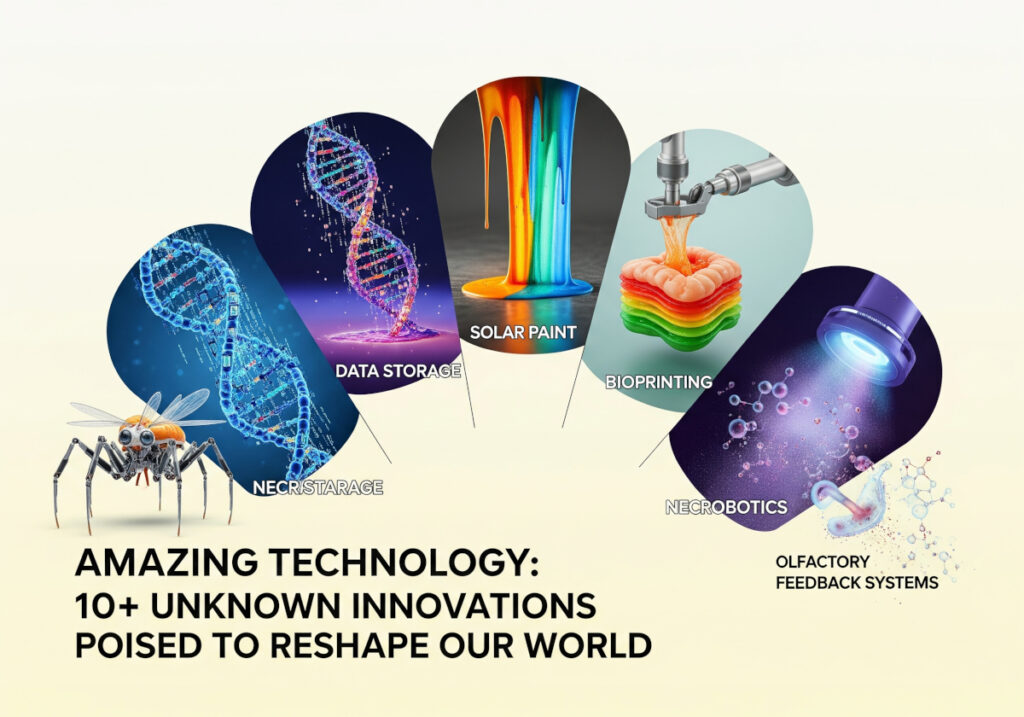
This article explores 10+ hidden innovations: from DNA data storage to solar paint—that are already making steady progress and could reshape industries and lives soon.
If you want to look beyond the buzzwords and discover the future’s unseen tech gems, this guide will open your eyes to what’s quietly shaping tomorrow.
1. DNA Data Storage: The Ultimate Archival Frontier
Imagine storing all the world’s data — entire libraries, archives, and databases — in something no bigger than a grain of sand. That’s the promise of DNA data storage, a breakthrough approach that uses the natural genetic code as a medium for digital information.

At its core, this technology translates binary data (0s and 1s) into the four building blocks of DNA — adenine (A), thymine (T), cytosine (C), and guanine (G). By synthesizing synthetic DNA strands in specific sequences, digital files can be “written” into molecules. Later, sequencing techniques “read” the DNA to recover the original data.
Why DNA? It is incredibly dense and stable. A single gram can theoretically store hundreds of terabytes of data. Plus, DNA lasts for thousands of years if preserved correctly, making it perfect for long-term archives like historical records or scientific datasets.
However, the technology still faces challenges before widespread use. Synthesizing and sequencing DNA is costly and slower compared to traditional storage. Scaling the process and managing errors also require innovation. But as costs drop and techniques improve, DNA storage could redefine how humanity preserves knowledge for generations to come.
2. Solar Paint & Hydrogen Production: Painting a Greener Future
What if your walls, roofs, or even vehicles could generate clean energy simply by being painted? Solar paint technology is turning that idea into reality. This innovative paint contains nanoparticles that absorb sunlight and moisture from the air, triggering a chemical reaction to split water vapor into hydrogen and oxygen.

Unlike bulky solar panels, this paint can coat almost any surface, turning everyday objects into miniature energy generators. The produced hydrogen fuel is clean and can power homes, cars, or be stored for later use, offering a decentralized and versatile energy solution.
While solar paint promises easier installation and potential cost savings, it currently lags behind traditional solar cells in efficiency. Durability and longevity of the coating under environmental conditions also need improvement. Additionally, safely capturing and storing the hydrogen gas remains a critical hurdle.
Once these challenges are addressed, solar paint could revolutionize renewable energy by making it accessible and integrable into everyday life in a way solar panels can’t match.
3. Bioprinting for Organs: Revolutionizing Transplant Medicine
The idea of printing a human organ might sound like science fiction, but bioprinting is rapidly turning it into reality. Using advanced 3D printing technology, living cells—known as bio-inks—are layered precisely to create tissues and organs that mimic natural structures.

This technology aims to tackle the severe shortage of organ donors by enabling the creation of personalized organs that are less likely to be rejected by the recipient’s immune system. Beyond transplants, bioprinted tissues provide platforms for testing drugs, reducing reliance on animal models and speeding up medical research.
Despite its promise, bioprinting faces significant obstacles. One major challenge is creating complex blood vessel networks to keep the printed organs alive after transplantation. Additionally, replicating full organ functions and meeting ethical and regulatory standards remain ongoing hurdles.
Still, as research progresses, bioprinting holds the potential to transform medicine, making organ shortages a thing of the past and offering hope to millions waiting for life-saving transplants.
4. Necrobotics & Biohybrid Robots: Unconventional Automation
What if dead spiders could help build robots? Necrobotics is a surprising field that combines biological components with artificial materials to create unique robotic devices. For example, scientists have used the hydraulic movement mechanism of a deceased spider’s legs to develop delicate robotic grippers.

Biohybrid robots take this concept further by integrating living muscle tissues with synthetic frameworks, enabling natural, energy-efficient movement. These robots offer advantages like biodegradability, low production costs, and the ability to operate in environments where traditional machines might struggle.
Potential applications include environmental monitoring, medical devices, and search-and-rescue missions in tight or hazardous spaces. However, these technologies are still emerging. Biological components tend to have limited lifespans, controlling living tissue consistently is complex, and ethical questions about using living or dead organisms in robotics persist.
Necrobotics and biohybrid robots represent a fascinating intersection of biology and engineering, opening new paths for sustainable and innovative automation.
5. Smelly VR (Olfactory Feedback Systems): Immersive Senses Beyond Sight
Virtual reality has come a long way in visual and audio immersion, but what about smell? Smelly VR or olfactory feedback systems aim to add scents into virtual experiences, creating a more complete sensory world.

These systems use small devices that release specific scents timed with VR content. Some heat wax containing fragrances, others use microfluidic channels to precisely control odor delivery. Imagine walking through a virtual forest and actually smelling pine, or exploring a bakery and catching whiffs of fresh bread.
Beyond gaming, this tech has applications in therapy, helping with memory recall or stress relief, and in virtual tourism, offering authentic sensory journeys without leaving home.
The technology still faces hurdles, such as producing a wide variety of realistic smells and clearing scents quickly to switch between them. Integrating scent devices seamlessly into VR headsets is also a challenge.
Though not yet mainstream, olfactory VR opens the door to truly multi-sensory virtual worlds, pushing immersion beyond sight and sound.
6. SpinLaunch: A New Era of Space Access
Space travel is expensive and complicated, but SpinLaunch offers an innovative alternative. This system uses a giant centrifuge in a vacuum chamber to accelerate small payloads to hypersonic speeds before releasing them into the upper atmosphere.
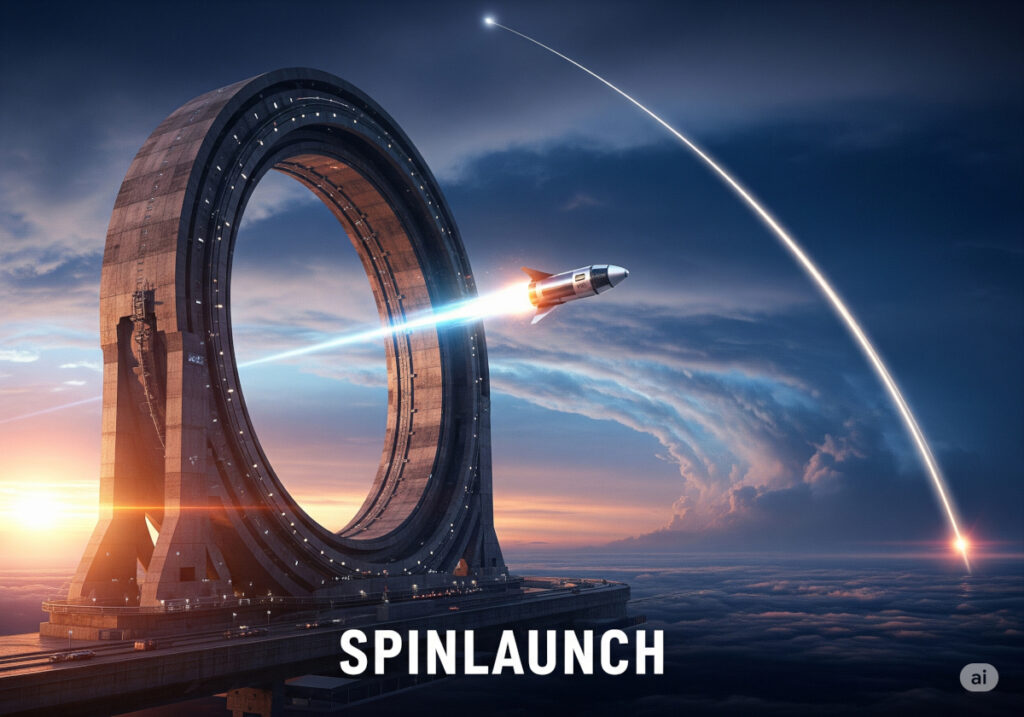
By replacing the rocket’s initial boost with kinetic energy, SpinLaunch promises to dramatically cut costs and increase launch frequency for small satellites. It also reduces environmental impact by avoiding the massive chemical fuel burns traditional rockets use.
However, SpinLaunch must solve technical challenges, such as protecting payloads from extreme G-forces during acceleration and precisely managing atmospheric entry after release. Regulatory approval for this unconventional launch method is also in progress.
If successful, SpinLaunch could democratize space access, enabling more frequent satellite deployments and expanding commercial and scientific opportunities in orbit.
7. Xenotransplantation: Bridging the Organ Gap
With millions waiting for organ transplants, xenotransplantation offers a bold solution — transplanting organs or tissues from animals, especially genetically modified pigs, into humans. Through gene editing, these donor animals are engineered to minimize immune rejection and reduce the risk of disease transmission.
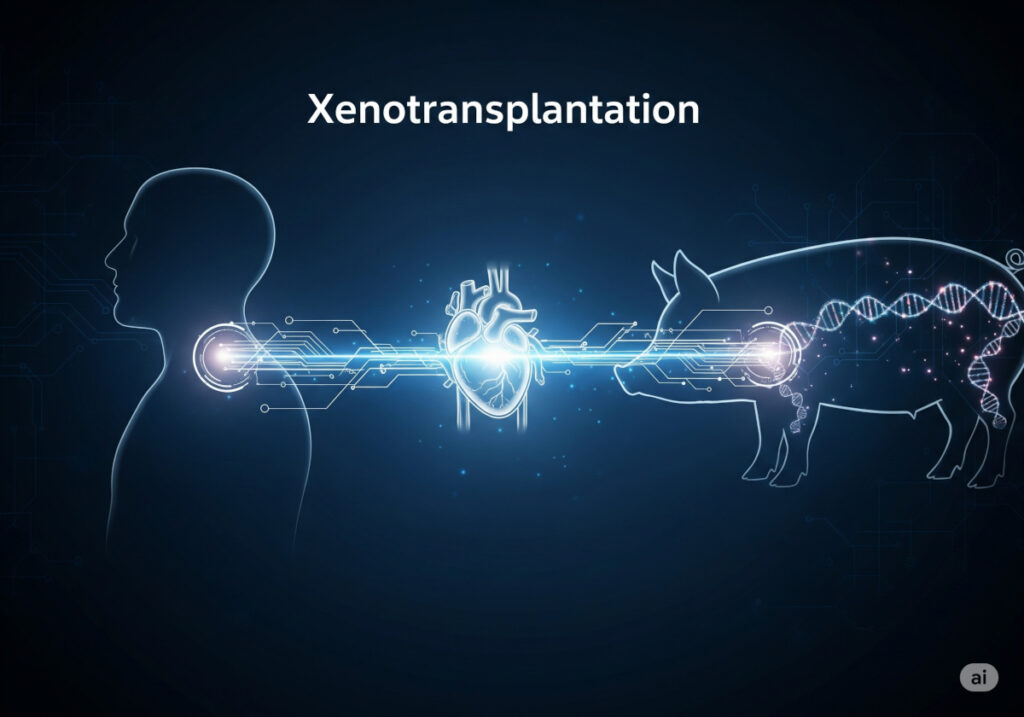
This approach could dramatically increase the availability of organs and provide treatments for chronic diseases that currently lack options. Recent advances in CRISPR gene editing have made this more feasible, bringing us closer to safe cross-species organ transplantation.
Despite its promise, xenotransplantation faces significant challenges. There’s ongoing concern about the risk of transferring animal viruses to humans and the immune system’s still formidable response. Ethical debates about animal welfare and societal acceptance also influence progress.
While it’s not yet routine, xenotransplantation could become a critical piece in solving the global organ shortage and saving countless lives in the years ahead.
8. Remodelable 3D Printed Bones: Custom Healing from Within
Orthopedic surgery is undergoing a quiet revolution with remodelable 3D printed bones. These implants are custom-made using biocompatible materials like tricalcium phosphate that gradually dissolve and get replaced by the patient’s own natural bone over time.
Unlike traditional metal implants, these printed bones encourage natural healing and regeneration, leading to better integration and fewer complications. Surgeons can tailor the implants precisely to fit a patient’s unique anatomy, improving comfort and recovery outcomes.
The technology promises faster healing, reduced need for follow-up surgeries, and a more natural restoration of function. However, it still requires extensive regulatory approvals, and costs remain relatively high.
As personalized medicine advances, remodelable 3D printed bones may become the new standard in treating fractures, bone defects, and reconstructive surgeries, making recovery smoother and more natural.
9. Quiet Supersonic Flight (NASA X-59): Breaking the Sound Barrier Silently
Supersonic travel used to mean hearing loud, disruptive sonic booms that made flights over land controversial or outright banned. NASA’s X-59 Quiet Supersonic Technology aircraft is changing that story. Designed with a sleek, elongated nose and unique body shape, the X-59 disperses shockwaves to reduce the traditional thunderous boom to a subtle “thump.”
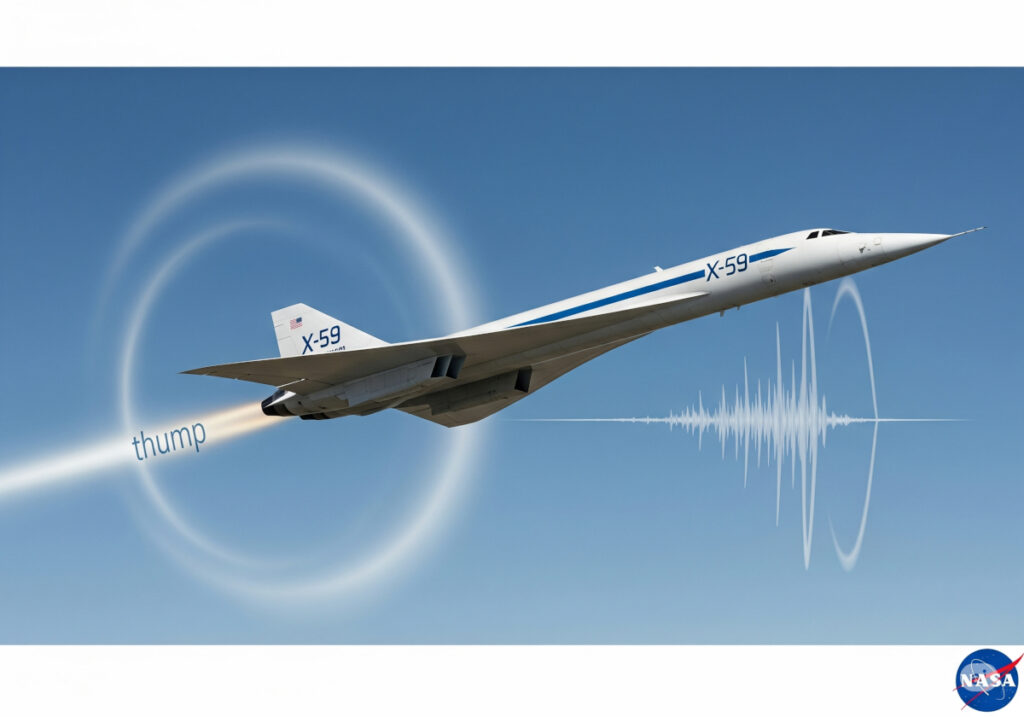
This innovation could bring back fast commercial supersonic flights over populated areas, cutting travel times dramatically while minimizing noise pollution. The X-59 project uses advanced computer modeling and aerodynamic design to manage airflow and shockwaves precisely.
Challenges remain, including proving consistent low-noise performance across different flight conditions and making the technology economically viable for airlines. Public acceptance of even a quiet thump is still being tested.
If successful, this could revolutionize aviation, connecting cities across continents at speeds previously thought too disruptive for daily travel.
10. Neuromorphic Computing: Building Brains in Silicon
Neuromorphic computing aims to build computer chips that think more like human brains. Instead of traditional processors that handle tasks sequentially, neuromorphic chips mimic neurons and synapses, processing information in parallel and asynchronously.
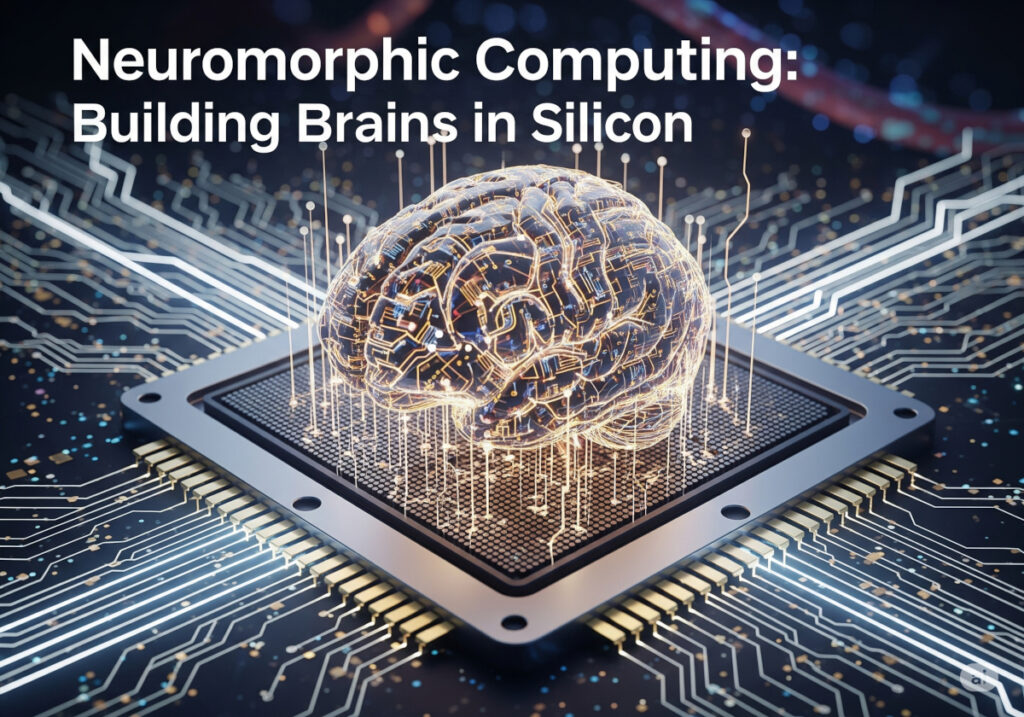
Using new components such as memristors that behave like synapses, these chips offer ultra-efficient, real-time learning and pattern recognition. This can dramatically reduce energy consumption compared to conventional AI hardware, enabling smarter devices on the edge, from robots to autonomous vehicles.
Though promising, neuromorphic computing faces hurdles in programming these brain-like chips and manufacturing them at scale. Integrating them with existing computing systems also remains a work in progress.
Once matured, this technology could transform AI, making it faster, more efficient, and capable of more human-like understanding and decision-making.
11. Self-Healing Materials: Engineering for Eternal Life
Imagine roads that repair their own cracks, phone screens that fix scratches automatically, or buildings that patch damage without costly maintenance. Self-healing materials are designed to do just that. These innovative substances contain microcapsules filled with healing agents or have intrinsic properties allowing them to autonomously repair damage when cracks or punctures occur.
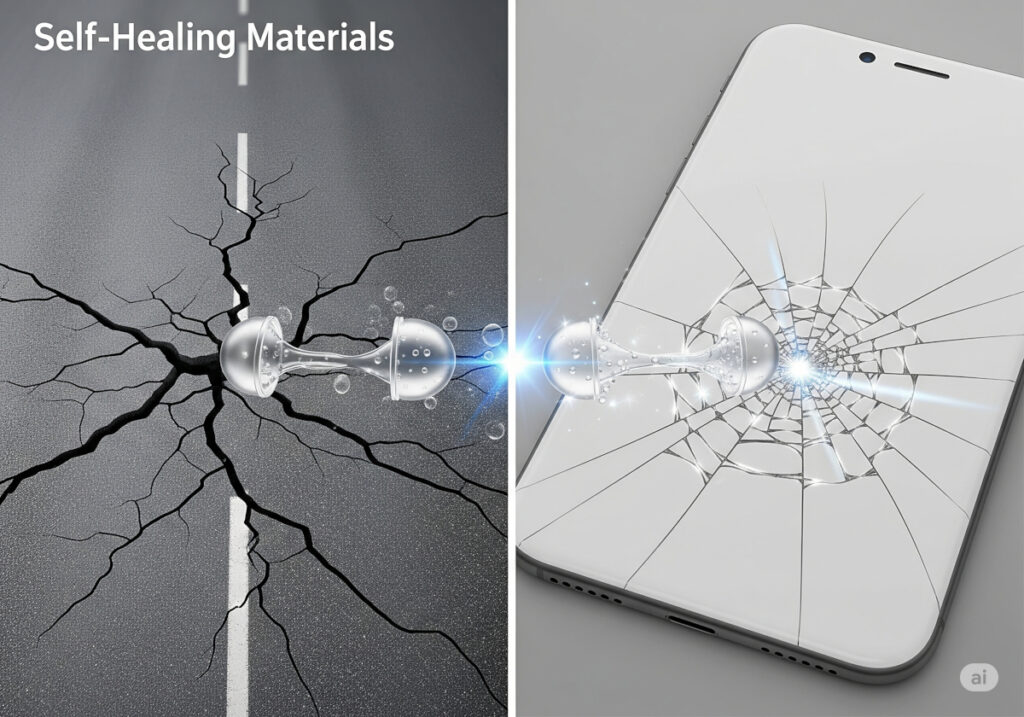
The materials work by releasing healing chemicals that fill gaps or trigger chemical reactions restoring structural integrity. Applications range from polymers and coatings to concrete used in infrastructure, promising longer-lasting products and significant reductions in repair costs and waste.
However, challenges include scaling these materials for large projects, ensuring they can heal significant damage, and keeping costs affordable for widespread use.
Self-healing materials offer a glimpse into a future where durability and sustainability go hand in hand, potentially revolutionizing everything from construction to consumer goods.
12. Reconfigurable Intelligent Surfaces (RIS): Smartening Our Wireless World
Wireless signals often struggle indoors or in dense urban areas due to obstacles and interference. Reconfigurable Intelligent Surfaces, or RIS, offer a futuristic solution: thin panels made from metamaterials that can dynamically reflect, focus, and steer radio waves to optimize wireless communication.

Controlled electronically like “smart mirrors” for signals, RIS can enhance coverage, boost signal strength, and reduce energy use in 5G and upcoming 6G networks. This technology could enable smarter environments where walls, windows, or furniture actively improve connectivity.
While RIS holds huge promise, manufacturing large, cost-effective panels and developing real-time control systems pose technical challenges. Integrating RIS with current network infrastructure also requires extensive coordination.
Once mainstream, RIS could redefine wireless communication, making networks faster, greener, and more reliable in the places we live and work.
Beyond the Hype: Why These Technologies Matter
At first, these technologies may seem like separate breakthroughs. But together, they reveal a future shaped by personalized medicine, sustainability, smarter systems, and new experiences.
Personalized medicine advances like bioprinting, xenotransplantation, and 3D printed bones promise tailored treatments, shorter transplant waits, and better healing. On the energy side, innovations like solar paint hint at cleaner, decentralized solutions embedded in everyday life.
Technologies such as neuromorphic computing, self-healing materials, and necrobotics push us toward efficient, adaptive systems that mimic living organisms. Meanwhile, SpinLaunch, quiet supersonic flight, and olfactory VR open fresh frontiers in exploration and immersive experience.
Many of these breakthroughs come from blending biology, physics, computer science, and engineering: a reminder that innovation thrives at the crossroads of disciplines.
These hidden technologies show that the future isn’t just flashy gadgets or AI hype. It’s subtle, powerful progress quietly shaping the world ahead.
The Dawn of a New Technological Age
We’ve only begun to uncover a range of lesser-known technologies quietly shaping our future. From DNA data storage and 3D printed bones to new space access methods and immersive virtual experiences, the next wave of innovation is happening beyond the spotlight.
These technologies promise longer-lasting infrastructure, life-saving personalized medicine, cleaner energy, and smarter, more natural systems. Yet, challenges like technical hurdles, ethics, and acceptance remain.
The key takeaway: the future isn’t just coming, it’s being built now by scientists and engineers pushing boundaries quietly but steadily. Staying curious and open to these hidden innovations matters for all of us who will live in this new world.
Keep exploring and embracing these breakthroughs. The future is happening now, one discovery at a time.
# Written by Elliyas Ahmed





